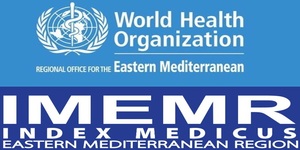Percentage of Patient with Celiac Disease among Children with Short Stature
DOI:
https://doi.org/10.36321/kjns.vi20161.2630Keywords:
Celiac Disease, Short Stature, anti-tTG antibodyAbstract
Background: Clinical features of celiac disease vary considerably. Intestinal symptoms are common in children whose disease is diagnosed within the 1st 2 years of life. As the age at presentation of the disease shifts to later in childhood, and with the more liberal use of serologic screening tests, extra-intestinal manifestations and associated disorders, without any accompanying digestive symptoms, have increasingly become recognized, including short stature. We aim in this study to determine the percentage of celiac disease among patients with short stature.
Objectives of the Study: (1) to show the percentage of patient with celiac disease in short stature children. (2) to show the effect celiac disease on treatment of short stature children.
Methodology: A cross sectional study that carried out at the Endocrine Pediatrics Clinic at A Zahraa Teaching Hospital for a period in 1st of January 2013 to end of October 2013; a total of 167 children and adolescents, aged range of 2 to 18 years were registered with short stature . 91 children of them only have been enrolled in this study according to inclusion criteria. Enzyme immunoassay (Biosystems, Spain) was used to determine IgA tTG using microplate tests. Samples with concentrations >20U/mL were defined as positive. Patients with positive anti-tTG
serology were referred to the gastroenterology clinic to continue investigation of celiac disease by endoscopy and biopsy. Data were analyzed by SPSS software in IBM version 20 using chi square and paired T-test.
Result: A total of 167 patients were evaluated 91 of them only have been enrolled in our study according to inclusion criteria; 59 (65%) were female and 32 (35%) were male. Median age was 9 years (of 2 - 18 years).The anti-tTG assays were positive in 16.5% of patients (15/91). Out of 15 patient whose diagnosed as anti-tTG positive, 11 (73%) have been diagnosed as celiac disease by endoscopy and biopsy according to modified marsh classification. All children diagnosed to have celiac disease were kept on a gluten-free diet. Patients were followed-up for six months and showed improvement in growth rate.
Conclusion: Celiac disease a cause of short stature that should be included in diagnostic investigations of short stature.
Recommendation: anti-tTG antibody as routine test recommended for all patients with short statures. All patients with idiopathic short statures and anti-tTG test positive with normal IgA level should be subjected to intestinal biopsy to prove the diagnosis of celiac disease.
Downloads
Downloads
Published
How to Cite
Issue
Section
License
Copyright (c) 2016 Dr. Alaa Jumaah Manji Dr. Qasim Mohammad Hashim Dr. Jasim Mohammad Hashim,Dr. Ahmed Thamer Abed

This work is licensed under a Creative Commons Attribution 4.0 International License.













